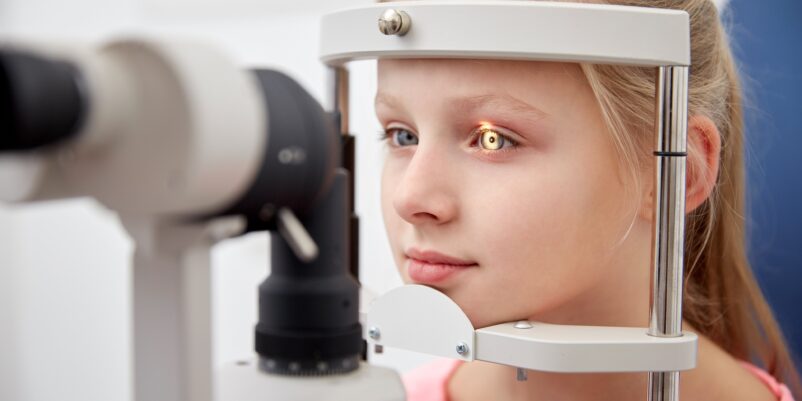Our eyes are remarkable organs that allow us to see and experience the world around us. However, they are also susceptible to various conditions that can affect our vision and overall eye health. Understanding these common eye conditions, including their causes, symptoms, and treatment options, is essential for maintaining optimal eye health. In this blog, we will explore some of the most prevalent eye conditions and shed light on the importance of seeking proper diagnosis and treatment.
- Myopia (Nearsightedness)
Myopia, commonly known as nearsightedness, is a refractive error that causes distant objects to appear blurry while close-up objects remain clear. It occurs when the eyeball is too long or the cornea is too curved, causing light to focus in front of the retina instead of directly on it. Genetic factors and environmental influences, such as excessive screen time or reading at a young age, contribute to the development of myopia. Common symptoms include squinting, headaches, and difficulty seeing distant objects. Corrective measures for myopia include prescription eyeglasses, contact lenses, or refractive surgery.
- Hyperopia (Farsightedness)
Hyperopia, or farsightedness, is the opposite of myopia. It occurs when the eyeball is too short or the cornea is too flat, causing light to focus behind the retina. People with hyperopia typically have difficulty seeing objects up close but may have better distance vision. Eye strain, blurred vision, and headaches are common symptoms. Hyperopia can be corrected with eyeglasses, contact lenses, or refractive surgery.
- Astigmatism
Astigmatism is a common refractive error that occurs when the cornea or lens has an irregular shape, causing blurred or distorted vision. It often coexists with myopia or hyperopia. Astigmatism may result in difficulties with both near and distance vision, as well as eye discomfort and headaches. Eyeglasses, contact lenses, or refractive surgery can effectively correct astigmatism.
- Presbyopia
Presbyopia is an age-related condition that affects the eye’s ability to focus on near objects. As we age, the natural lens of the eye becomes less flexible, making it challenging to focus on close-up objects. Symptoms of presbyopia include difficulty reading small print, eye strain, and the need to hold reading materials at arm’s length. Reading glasses, multifocal lenses, or contact lenses can help manage presbyopia.
- Cataracts
Cataracts refer to the clouding of the eye’s natural lens, which leads to blurry vision and decreased visual acuity. Aging, prolonged sun exposure, certain medications, and underlying health conditions can contribute to the development of cataracts. Common symptoms include cloudy or dim vision, increased sensitivity to glare, and difficulty seeing at night. Cataracts can be treated through a surgical procedure in which the cloudy lens is replaced with an artificial one.
- Glaucoma
Glaucoma is a group of eye conditions that cause damage to the optic nerve, often due to increased intraocular pressure. It is one of the leading causes of irreversible blindness worldwide. The most common form, called primary open-angle glaucoma, usually progresses slowly without noticeable symptoms in the early stages. However, as the disease advances, peripheral vision loss, eye pain, and blurred vision may occur. Treatment for glaucoma aims to reduce intraocular pressure and may involve eye drops, oral medications, laser therapy, or surgery.
- Age-related Macular Degeneration (AMD)
Age-related macular degeneration (AMD) is a progressive condition that affects the macula, the central part of the retina responsible for sharp central vision. It primarily affects individuals over the age of 50 and is one of the leading causes of vision loss in older adults. There are two forms of AMD: dry AMD and wet AMD.
Dry AMD is characterized by the gradual breakdown of light-sensitive cells in the macula, leading to a blurred or distorted central vision. It progresses slowly and may result in the development of drusen, small yellow deposits in the retina. Although there is no specific treatment for dry AMD, certain lifestyle changes such as quitting smoking, eating a healthy diet rich in antioxidants, and protecting the eyes from UV rays can help slow down its progression.
Wet AMD, on the other hand, involves the growth of abnormal blood vessels beneath the macula. These blood vessels can leak fluid and blood, causing rapid and severe vision loss. Wet AMD requires immediate medical attention, as there are treatments available to slow down the progression and preserve vision. These treatments include anti-VEGF injections, laser therapy, and photodynamic therapy.
- Diabetic Retinopathy
Diabetic retinopathy is a complication of diabetes that affects the blood vessels in the retina. High blood sugar levels can damage the tiny blood vessels, causing them to leak or become blocked, leading to vision problems. In the early stages, diabetic retinopathy may not cause noticeable symptoms. However, as it progresses, individuals may experience blurred or fluctuating vision, floaters, impaired color vision, or even complete vision loss. Managing diabetes through proper blood sugar control, regular eye exams, and timely treatment can help prevent or slow down the progression of diabetic retinopathy.
Conclusion
Understanding common eye conditions and their causes, symptoms, and treatment options is crucial for maintaining optimal eye health. Whether it’s myopia, hyperopia, astigmatism, presbyopia, cataracts, glaucoma, age-related macular degeneration, or diabetic retinopathy, seeking timely medical attention and proper treatment is essential for preserving and improving vision.
If you or someone you know is experiencing any eye-related symptoms or concerns, it is recommended to consult an eye care professional for a comprehensive eye examination. By visiting a reputable healthcare institution like LifePoint Hospital (https://www.lifepointhospital.in/), you can receive expert care and access state-of-the-art diagnostic tools and treatment options tailored to your specific needs.
Remember, your eyes are precious, and taking proactive steps to maintain your health will contribute to a better quality of life and visual well-being. Don’t hesitate to prioritize your eye health and seek the necessary support to ensure a lifetime of clear and vibrant vision.

